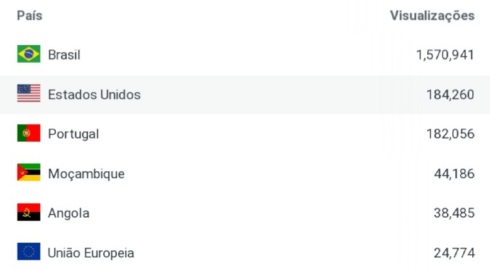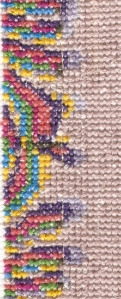Nesta página tenciono agrupar os problemas juntamente com os links para as resoluções do que dei o nome de Problema do mês, possivelmente seis por ano. A versão pdf encontra-se a seguir.
It is my intention to group here the problems together with the solutions links of what I called Problem of the month, likely six a year. The pdf version is this one
Edição :: Edition 2010-10-17 ![]() pdmpom20101017
pdmpom20101017
Selected solutions are not necessarily the ones that have the best mathematical quality.
* * *
Resolveram :: Solvers
#1: Pierre Bernard, fede, fatima.
#2: antonio girao, Pierre Bernard , MathOMan.
#3: M, Dani, MathOMan
#4: Paulo Sérgio, fatima
#5: Jacques Glorieux, fatima
#6: Jacques Glorieux, josejuan, Paulo Sérgio
* * *
#1 Junho/June 11, 2009
(Valoração p-ádica :: p-adic valuation).
Enunciado do Problema
Seja
o maior inteiro positivo tal que
Determine, justificando, um majorante de
- Nota: não se permite a utilização de calculadoras ou computadores.
- Sairá vencedora a melhor estimativa justificada.
- Afirmação não demonstrada: 10 é um majorante de
. Encontre um mais pequeno.
- O prazo limite para apresentar resoluções é 19.07.2009.
Problem Statement
Let
be the greatest positive integer such that
Find with proof an upper bound for
- Remark: the use of calculators or computers is not allowed.
- The best justified estimate will win.
- Claim: 10 is an upper bound for
. Find a smaller one.
- The deadline for submitting solutions is July 19, 2009.
#2 Junho/June 26, 2009
(Coeficientes da série binomial :: Binomial series coefficients).
Enunciado do Problema
Admita que
. Seja
um número real,
e
. Deduza a identidade
.
- O prazo limite para apresentação das resoluções é 9.09.2009, quer via email acltavares@sapo.pt ou comentando no blogue.
Problem Statement
Suppose that
. Let
be a real number,
and
. Derive the identity
.
- The deadline for submitting solutions is September 9, 2009 either via e-mail acltavares@sapo.pt or comment box.
#3 Janeiro/January6, 2010
(Polinómio real :: Real polynomial).
Enunciado do Problema
Seja
um polinómio real de grau
. Suponha que o coeficiente do termo de maior grau de
é igual a
. Prove que
, em que
são as raízes de
.
- O prazo limite para apresentação das resoluções é 10.02.2010, através de email acltavares@sapo.pt ou comentando no blogue.
Problem Statement
Let
be a polynomial of degree
. Assume that the leading coefficient of
is equal to
. Prove that
, where
are the roots of
.
- The deadline for submitting solutions is February 10, 2010 either via e-mail acltavares@sapo.pt or comment box.
#4 Março/March 6, 2010
(Integral impróprio :: Improper Integral).
Enunciado do Problema
Prove ou infirme:
- Nota: não se permite a utilização de calculadoras ou computadores.
- O prazo limite para apresentar resoluções é 28.03.2010 via email acltavares@sapo.pt ou comentando no blogue.
Problem Statement
Prove or disprove:
.
- Remark: the use of calculators or computers is not allowed.
- The deadline for submitting solutions is March 28, 2010 either via e-mail acltavares@sapo.pt or comment box.
#5 Abril/April 23, 2010
(Uma função real contínua ilimitada :: An unbounded continuous real function)
Enunciado do Problema
Seja
uma função real contínua ilimitada no intervalo
. O integral impróprio
pode ser convergente?
- O prazo limite para a apresentação de resoluções é 17.05.2010, aqui ou por e-mail:
Problem Statement
Let
be a continuous unbounded real function in the interval
. May the improper integral
converge?
- The deadline for submitting solutions is May 17, 2010. Submissions may be here or via e-mail:
<a href=”mailto:acltavares@sapo.ptacltavares@sapo.pt
#6 Setembro/September 13, 2010
(Círculos :: Circles)
Enunciado do Problema
Os quatro círculos têm o mesmo raio. Determine-o no caso do triângulo medir 1 m².
- Serão bem-vindas soluções até ao fim do mês, comentando ou por email: acltavares@sapo.pt

Problem Statement
The four circles have equal radius. Find it if the size of the triangle is 1 m².
- Solutions till the end of the month will be welcome, in the comments
box or via e-mail: <a href=”mailto:acltavares@sapo.ptacltavares@sapo.pt
#7 Outubro/October 16, 2010
Enunciado do Problema :: Problem Statement
Mostre que :: Show that
-
Solutions: until November 8, 2010, via e-mail <a href=”mailto:acltavares@sapo.ptacltavares@sapo.pt or comment box.
Desafios :: Challenges
Resolveram :: Solvers
#1: d3r4z, A. Tavares
#2: RSCS
#3: Jacques Glorieux
1. Desafio sobre sequências (sucessões): descobrir o termo geral :: Challenge: Find the general term of a sequence
Qual é o próximo termo da sucessão seguinte? / Which is the next term of the following sequence?
E o termo de ordem ? / And its
term?
Adenda/Addendum
Nota: os termos são fracções reduzidas.
Remark: every term of the sequence is a fraction in its lowest terms.
O leitor d3r4z descobriu o 6.º temo aqui / The reader d3r4z found the 6th term here
2. Desafio: área entre círculos :: Challenge: area between circles
Tem cinco moedas iguais, cada uma a tocar nas duas adjacentes. No espaço que fica no meio coloca uma moeda tangente às cinco.
Qual é a área total entre as moedas em função do diâmetro das maiores?
Five equal coins touch to its two adjacents. In the central space between them another coin that is tangent to those five is placed.
Find the total area between the coins as a function of the diameter of each one of the outer five.

Figura auxiliar / Auxiliar figure
Neste caso o $0.05 não é bem tangente aos €0.50.
In this case the $0.05 is not accurately tangent to the five €0.50.
Imajine que as moedas eram círculos ideais, tangentes 3 a 3, excepto o central a 5.
Suppose all the coins were ideal 3 to 3 tangent circles, except the central one tangent to the other 5.
de / by RSCS
3. Desafio: áreas de faixas dentro do círculo :: Challenge: strip areas inside the circle
Os arcos de circunferência a grosso verdes e azuis têm o mesmo comprimento. A soma das áreas delimitadas pelos arcos e linhas a grosso azuis é igual à soma das áreas delimitadas pelos verdes? Justifique.
Nota: os diâmetros são perpendiculares.

The thick green and blue circle arcs have the same lengths. Does the sum of the areas limited by the thick blue arcs and lines equal the sum of the areas limited by the green ones? Justify.
Remark: the diameters are perpendicular.
de / by Jacques Glorieux
Outros :: Other
A – Prove que/Prove that
,
em que/where .
B – Prove/Prove
.
Resolução/Solution:
Em virtude de no intervalo se ter/Since in the interval
we have
e/and
,
então/as well as
;
donde resulta que/hence
e, portanto,/Therefore
,
quando /when
Se a série dos termos em valores absolutos converge para então também o faz a própria série.
If the series converges is absolutely convergent, it is convergent.










